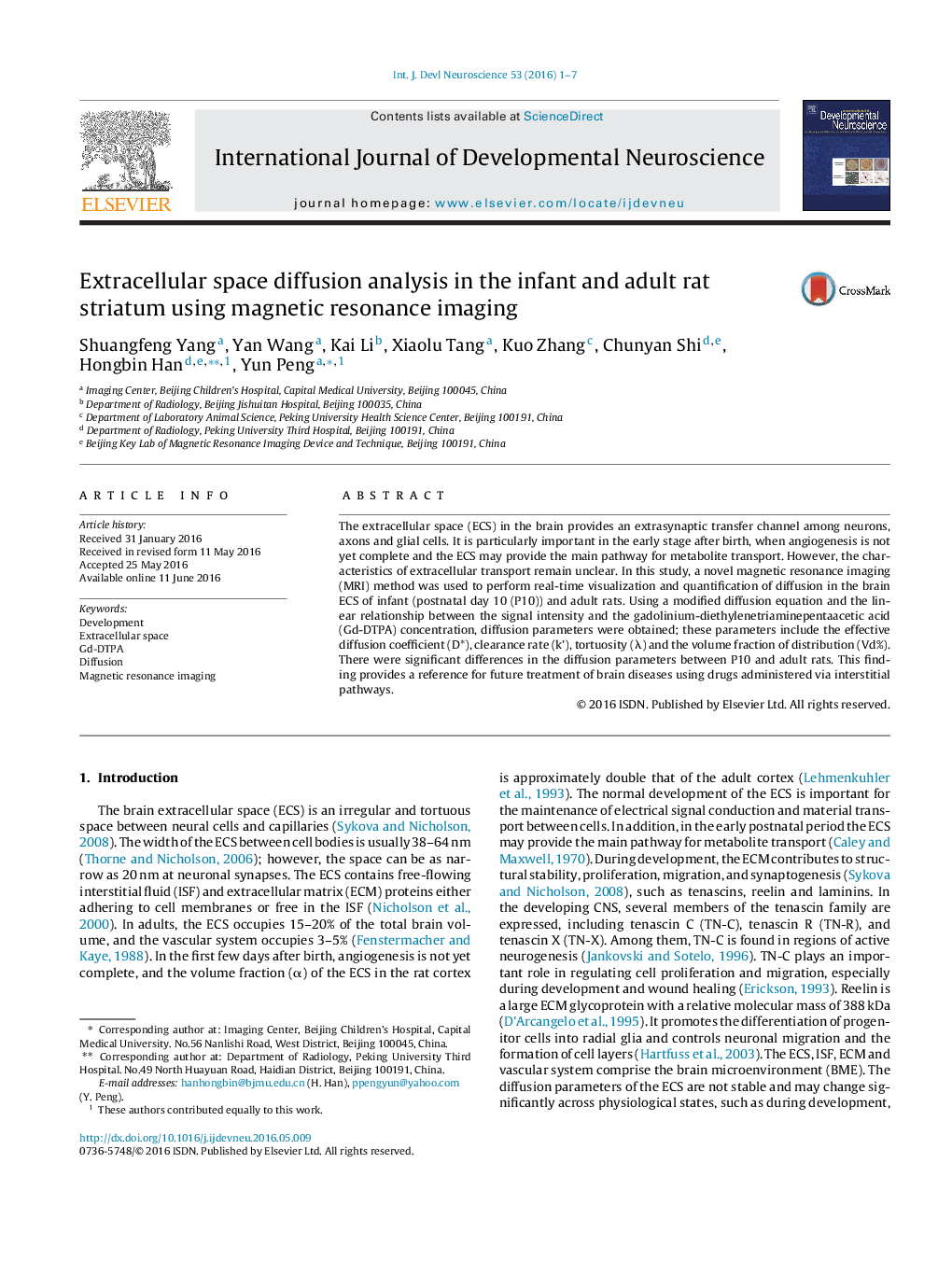| Article ID | Journal | Published Year | Pages | File Type |
|---|---|---|---|---|
| 2785610 | International Journal of Developmental Neuroscience | 2016 | 7 Pages |
•The Gd-DTPA tracer-based MRI method is unique in detecting and imaging the brain ECS on a whole brain scale.•Gd-DTPA has many advantages over other tracers, including biological inertness, thermal stability, and extracellular distribution.•Both microscopic and macroscopic parameters can be assessed by this method.
The extracellular space (ECS) in the brain provides an extrasynaptic transfer channel among neurons, axons and glial cells. It is particularly important in the early stage after birth, when angiogenesis is not yet complete and the ECS may provide the main pathway for metabolite transport. However, the characteristics of extracellular transport remain unclear. In this study, a novel magnetic resonance imaging (MRI) method was used to perform real-time visualization and quantification of diffusion in the brain ECS of infant (postnatal day 10 (P10)) and adult rats. Using a modified diffusion equation and the linear relationship between the signal intensity and the gadolinium-diethylenetriaminepentaacetic acid (Gd-DTPA) concentration, diffusion parameters were obtained; these parameters include the effective diffusion coefficient (D*), clearance rate (k'), tortuosity (λ) and the volume fraction of distribution (Vd%). There were significant differences in the diffusion parameters between P10 and adult rats. This finding provides a reference for future treatment of brain diseases using drugs administered via interstitial pathways.
